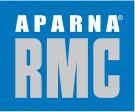Ensuring Durability: The Importance of Concrete Curing

April 7, 2024
Concrete, the backbone of modern construction, requires more than just a strong mix to achieve its full potential. Concrete curing, often overlooked, plays a critical role in unlocking its durability in construction.
Curing facilitates the complete hydration reaction between cement and water. Think of uncured concrete as a pile of sand – curing acts as the binding agent, transforming it into a robust structure. This translates to optimal concrete strength development.
Several concrete curing methods exist, including water curing, membrane curing, and curing compounds. Each method aims to maintain proper moisture and temperature within the concrete during its early stages.
What is Curing?
Curing is the process of keeping the concrete surface moist after it has been poured. This is crucial because concrete undergoes a chemical reaction called hydration, which releases heat and causes the concrete to lose moisture. If the concrete dries out too quickly, it won’t achieve its full strength and durability. Proper curing helps control this moisture loss and allows the hydration process to happen fully, resulting in a stronger, more durable concrete structure.
Why Prioritse Curing?
Inadequate curing leads to detrimental consequences:
- Reduced Strength: Incomplete hydration results in lower-than-desired strength, jeopardizing structural integrity.
- Cracking: Uneven moisture loss induces cracks, compromising aesthetics and potentially allowing water infiltration.
- Increased Porosity: Poorly cured concrete becomes more porous, accelerating deterioration due to water damage.
The RMC Curing Advantage
While both ready-mix concrete (RMC) and site-mixed concrete require curing, RMC offers a distinct benefit:
Consistent Quality: Aparna RMC, for example, utilizes high-quality, precisely measured ingredients that promote optimal hydration throughout the mix.
Expert Mix Design: Our team formulates Aparna RMC mixes specifically for proper curing in your project’s climate and application.
Uniform Curing: RMC ensures a consistent mix throughout your project, leading to uniform concrete strength development and consistent curing across all elements.
Methods of Curing
Several concrete curing methods exist, each with its advantages and suitability for different project conditions. Here’s a closer look at the most common methods:
1. Water Curing: The Traditional and Effective Approach
- Process: This time-tested method involves keeping the concrete surface saturated with water to prevent moisture loss during the crucial hydration process. Water curing is especially effective during hot and dry weather when evaporation rates are high.
- Methods:
- Sprinkling: Water is regularly sprayed on the concrete surface using a hose, bucket, or specialized misting equipment. The frequency of sprinkling depends on factors like weather conditions, wind speed, and concrete temperature. Generally, sprinkling is done several times a day for the curing period, ensuring the surface remains moist.
- Ponding: This method involves creating a shallow pool of water (around 1-2 inches deep) on the concrete surface. This is often achieved by constructing a temporary dike around the perimeter of the concrete slab. Ponding is effective for large, flat surfaces and requires covering the water to minimize evaporation.
- Sprinkling: Water is regularly sprayed on the concrete surface using a hose, bucket, or specialized misting equipment. The frequency of sprinkling depends on factors like weather conditions, wind speed, and concrete temperature. Generally, sprinkling is done several times a day for the curing period, ensuring the surface remains moist.
2. Covering Methods: Retaining Moisture Through Material Barriers
- Process: These methods involve covering the concrete surface with a material that retains moisture and slows down evaporation. Covering methods are a good alternative to water curing, especially in situations where consistent water application might be challenging.
- Materials:
- Wet Hessian Cloth (Burlap): A traditional and cost-effective method. The cloth is draped over the concrete surface and kept wet by regular watering. However, hessian cloth can dry out quickly, especially in hot weather, requiring frequent monitoring and wetting.
- Polyethylene Sheets (HDPE): Durable plastic sheets that effectively prevent moisture loss. They are laid directly on the concrete surface and sealed at the edges to minimize air circulation. HDPE sheets can trap heat under certain conditions, so monitoring is still important to ensure optimal curing.
3. Membrane Curing: A Single Application for Ongoing Protection
- Process: This method involves applying a liquid chemical compound to the concrete surface that forms a thin, invisible film. This film acts as a barrier to reduce water evaporation from the concrete, simplifying the curing process compared to some water curing methods.
- Benefits:
- Easier to apply: Compared to some water curing methods, membrane curing can be applied more quickly and efficiently with a single application.
- Damp surface application: Unlike water curing, membrane curing can be applied to damp concrete surfaces, offering more flexibility in the curing process.
- Extended curing window: In hot weather conditions, membrane curing can help extend the effective curing window by reducing evaporation rates.
By understanding these curing methods and their strengths, construction professionals can choose the most appropriate approach for their specific project requirements.
Building with Confidence: Choose Aparna RMC
At Aparna RMC, we understand the importance of a meticulous RMC curing process alongside high-quality materials. By choosing Aparna RMC, you benefit from:
Superior Durability: Properly cured concrete guarantees the long-term strength and integrity of your structure.
Reduced Maintenance Costs: Durable, crack-resistant concrete translates to lower maintenance requirements over the years.
Peace of Mind: Knowing your concrete is cured with the utmost care allows you to focus on the bigger picture.
Don’t underestimate the power of concrete curing. It’s the key process that unlocks the full potential of concrete, ensuring your project achieves exceptional durability in construction. For projects demanding exceptional quality and longevity, choose Aparna RMC – your partner in building excellence.
